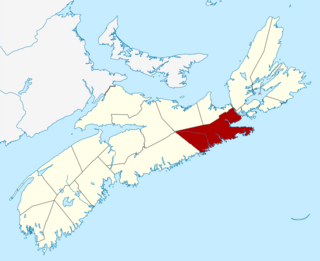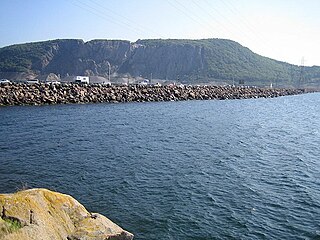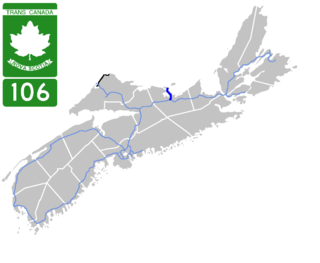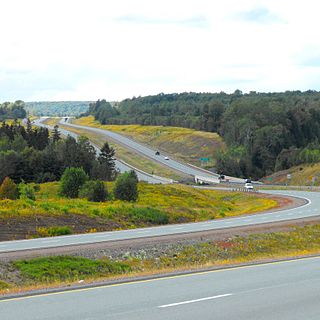The Stormont II is a cable ferry operating in the Canadian province of Nova Scotia.

A cable ferry is a ferry that is guided across a river or large body of water by cables connected to both shores. Early cable ferries often used either rope or steel chains, with the latter resulting in the alternate name of chain ferry. Both of these were largely replaced by wire cable by the late 19th century.

Canada is a country in the northern part of North America. Its ten provinces and three territories extend from the Atlantic to the Pacific and northward into the Arctic Ocean, covering 9.98 million square kilometres, making it the world's second-largest country by total area. Canada's southern border with the United States is the world's longest bi-national land border. Its capital is Ottawa, and its three largest metropolitan areas are Toronto, Montreal, and Vancouver. As a whole, Canada is sparsely populated, the majority of its land area being dominated by forest and tundra. Consequently, its population is highly urbanized, with over 80 percent of its inhabitants concentrated in large and medium-sized cities, many near the southern border. Canada's climate varies widely across its vast area, ranging from arctic weather in the north, to hot summers in the southern regions, with four distinct seasons.

Nova Scotia is one of Canada's three Maritime Provinces, and one of the four provinces that form Atlantic Canada. Its provincial capital is Halifax. Nova Scotia is the second-smallest of Canada's ten provinces, with an area of 55,284 square kilometres (21,300 sq mi), including Cape Breton and another 3,800 coastal islands. As of 2016, the population was 923,598. Nova Scotia is Canada's second-most-densely populated province, after Prince Edward Island, with 17.4 inhabitants per square kilometre (45/sq mi).
Stormont II was built by Ferguson Industries Ltd. at Pictou in 1980. It is owned by the Minister of Transportation and Infrastructure Renewal.

The Pictou Shipyard is a Canadian shipbuilding site located in Pictou County, Nova Scotia, Canada and made famous by its use as an emergency shipbuilding facility in World War Two where it constructed twenty-four 4,700 ton Scandinavian class freighters. At its current site it was founded as The Pictou Iron Foundry in 1856 by William Henry Davies and through many business booms and busts as well as several changes of ownership it continues to operate today under the ownership of Aecon Atlantic Industrial Inc.
Stormont II currently operates on a 0.41 nmi (760 m) route across Country Harbour in Guysborough County where it connects Port Bickerton in the west with Isaac's Harbour North in the east, carrying traffic for Route 211.

Guysborough County is a county in the Canadian province of Nova Scotia.

Port Bickerton is a small community in the Canadian province of Nova Scotia, located in the Municipality of the District of Saint Mary's in Guysborough County.

Isaac's Harbour North is a community in the Canadian province of Nova Scotia, located in the Municipality of the District of Guysborough in Guysborough County.
The ferry has a capacity of 12 automobile-equivalent vehicles, measuring 24.72 m (81.1 ft) in length and 9.45 m (31.0 ft) in breadth while having a draught of 1.52 m (5.0 ft). It has a gross tonnage of 84 GT and is powered by a 74 kW (99 hp) diesel engine which pulls the ferry on a fixed cable at a speed of 5 kn (9.3 km/h).











